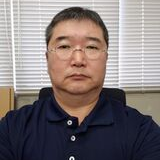Multifunctional Crystal Materials with Non-centrosymmetry: Piezoelectric and Nonlinear Optical Properties and Their Applications Volume II
A special issue of Crystals (ISSN 2073-4352). This special issue belongs to the section "Inorganic Crystalline Materials".
Deadline for manuscript submissions: closed (30 October 2021) | Viewed by 14414
Special Issue Editors
Interests: piezoelectric crystals; nonlinear optical crystals; single crystal growth; structure–property relationships; piezoelectric sensors
Special Issues, Collections and Topics in MDPI journals
Special Issue Information
Dear Colleagues,
The advances of non-centrosymmetric crystal materials greatly promote the development of multifunctional devices which take advantages of piezoelectric, ferroelectric, pyroelectric, non-linear optic and electro-optic effects and support many aspects of various industry fields. These crystal materials are capable to achieve the mutual conversion of different energies, including light, electricity, heat, magnetism, mechanical force and so on. Among the non-centrosymmetric crystals, the piezoelectric, ferroelectric and nonlinear optical crystal materials have attracted a lot of attention in the last several decades.
Extensive studies have been implemented in designing new non-centrosymmetric crystal materials and/or optimising the opto-electric functions of crystal materials to improve the selectivity of crystal materials for device applications. Crystal growth has also been proposed to enhance the piezoelectric, ferroelectric, and nonlinear optical responses. Firstly, the absence of grain boundaries in single crystals enables a larger volume of the material contributing to the electromechanical and nonlinear responses. Secondly, the chemical doping in piezoelectric, ferroelectric, and nonlinear optical crystals can manipulate the microscopic polarization, thus improving the macroscopic opto-electric properties. Thirdly, the low-dimensional piezoelectric, ferroelectric, and nonlinear optical crystals would be conducive to the findings of interesting electrical and optical behaviours.
This Special Issue aims to cover all the relevant aspects of piezoelectric and nonlinear optical crystal materials. Well-established, novel, or less common compounds, and micro mechanisms in single crystals will be covered. Therefore, the issue welcomes original research and review manuscripts on the following main aspects:
- Development and design of non-centrosymmetric crystal materials
- Piezoelectric and/or ferroelectric crystals and films
- Nonlinear optical crystals
- Piezoelectricity
- Ferroelectricity
- Domain engineering
- Crystal defects
- Opto-electric property characterization
- Theoretical study with Ab-initio, DFT, and first principles calculations on non-centrosymmetric crystal materials
Prof. Fapeng Yu
Prof. Dr. Naohisa Takesue
Guest Editors
Manuscript Submission Information
Manuscripts should be submitted online at www.mdpi.com by registering and logging in to this website. Once you are registered, click here to go to the submission form. Manuscripts can be submitted until the deadline. All submissions that pass pre-check are peer-reviewed. Accepted papers will be published continuously in the journal (as soon as accepted) and will be listed together on the special issue website. Research articles, review articles as well as short communications are invited. For planned papers, a title and short abstract (about 100 words) can be sent to the Editorial Office for announcement on this website.
Submitted manuscripts should not have been published previously, nor be under consideration for publication elsewhere (except conference proceedings papers). All manuscripts are thoroughly refereed through a single-blind peer-review process. A guide for authors and other relevant information for submission of manuscripts is available on the Instructions for Authors page. Crystals is an international peer-reviewed open access monthly journal published by MDPI.
Please visit the Instructions for Authors page before submitting a manuscript. The Article Processing Charge (APC) for publication in this open access journal is 2100 CHF (Swiss Francs). Submitted papers should be well formatted and use good English. Authors may use MDPI's English editing service prior to publication or during author revisions.
Keywords
- Piezoelectric and/or ferroelectric crystals and films
- Nonlinear optical crystals
- Piezoelectricity
- Crystal defects
Benefits of Publishing in a Special Issue
- Ease of navigation: Grouping papers by topic helps scholars navigate broad scope journals more efficiently.
- Greater discoverability: Special Issues support the reach and impact of scientific research. Articles in Special Issues are more discoverable and cited more frequently.
- Expansion of research network: Special Issues facilitate connections among authors, fostering scientific collaborations.
- External promotion: Articles in Special Issues are often promoted through the journal's social media, increasing their visibility.
- e-Book format: Special Issues with more than 10 articles can be published as dedicated e-books, ensuring wide and rapid dissemination.
Further information on MDPI's Special Issue polices can be found here.






